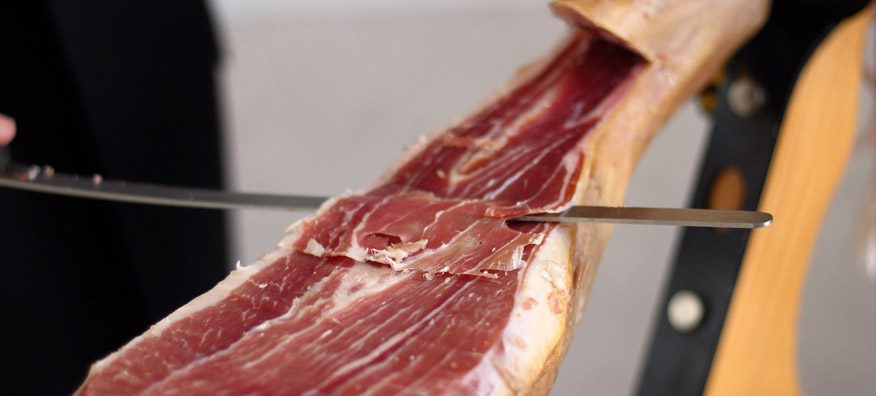Jamón is a kind of dry-cured ham produced in Spain. It is one of the most globally recognized food items of Spanish cuisine. Most jamón is commonly called jamón serrano in Spain.
Jamon is a cured pork leg delicacy that has been around for over 2,000 years.
The average Spaniard eats about 5 kg of jamon per year.
The rarest jamon – Manchado de Jabugo – costs about 4100 euros per leg, and all because there are only 51 adult individuals of this species of pigs left in the world.
There is an interesting legend that the Spaniards learned the taste of jamon after they caught a pig that was drowning in the river. The river originated in a salty spring, and a pig that had been floundering there for a long time became saturated with salt.
Spanish jamon was eaten on hikes, as this product has a high energy value.
It was also consumed by the poor. Unable to buy fresh meat, they salted and dried pork legs, which subsequently became the main dish of a meager dinner.
The active export of jamon began in the 17th century. Gourmets from all over the world liked its taste so much that this delicacy does not lose popularity to this day. All connoisseurs of dried delicacies strive to buy Spanish jamon.
There are two types of Spanish jamon: Iberico and Serrana. Iberico – more expensive, it is prepared from the hind leg of a black Iberico pig. You can distinguish such a jamon by a black hoof.
There is also a Spanish jamon made from the front leg of an animal called delantero or paleta. A shoulder blade prepared in the same way is called lomo.
Do you love ham like we do?
Check out our products with the funny slogan “Jamon Everubody”:
[porto_products view=”grid” column_width=”1″ orderby=”ID” ids=”2512, 2497, 2551, 2584″ addlinks_pos=”outimage”]
Cooking the right jamon begins long before salting. The first point is a suitable breed and nutrition of pigs. After the animal reaches a certain age and size, the second point begins – deboning the meat. Only an experienced butcher will be able to give the correct v-shape that distinguishes the Spanish jamon. On the Iberico jamon, a small piece of wool is specially left, which serves as proof of belonging to the black breed of pigs.
After deboning, the jamon is salted for 23 weeks and kept in cellars with a certain microclimate. Salt draws out excess moisture from the meat and preserves it. Then the future delicacy is cleaned of salt and the drying process begins. The ham is placed in a chamber with a constant temperature and humidity, which allows the salt to be evenly distributed throughout the meat. This process takes up to 2 months. The next step is drying. The vertically suspended ham is aged in a room with good air circulation. At this time, subcutaneous fat is absorbed into the meat.
Spanish jamon is checked by specially trained people. They look at its appearance, feel its texture and pierce it with a bone needle, determining the degree of readiness for smell. Only a few products are tested with such thoroughness. Among them is marbled beef.
To buy authentic Spanish jamon, special labels that are attached to the ham will help you. As for elite wines, the province where the pig was grown is written on the labels. Moreover, on the label you can find the name of the pasture, the weight of the ham before pickling, the start date of cooking and the length of exposure.
Do you consider yourself a jamon lover? Please write your opinion in the comments.

